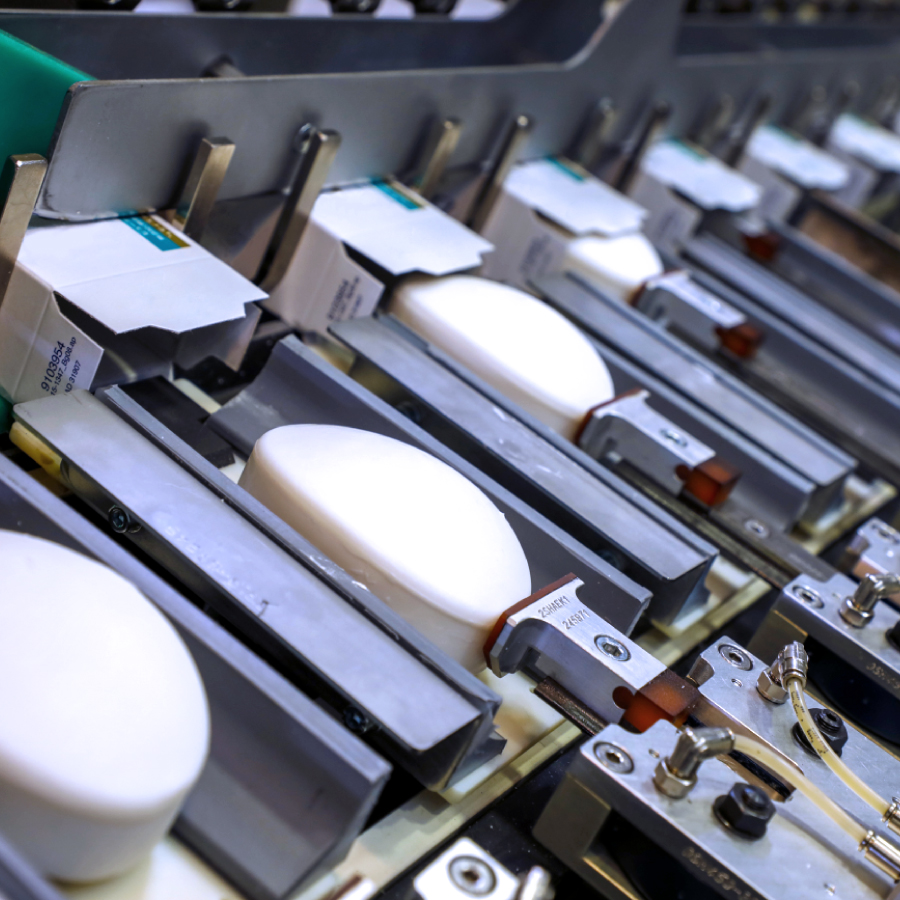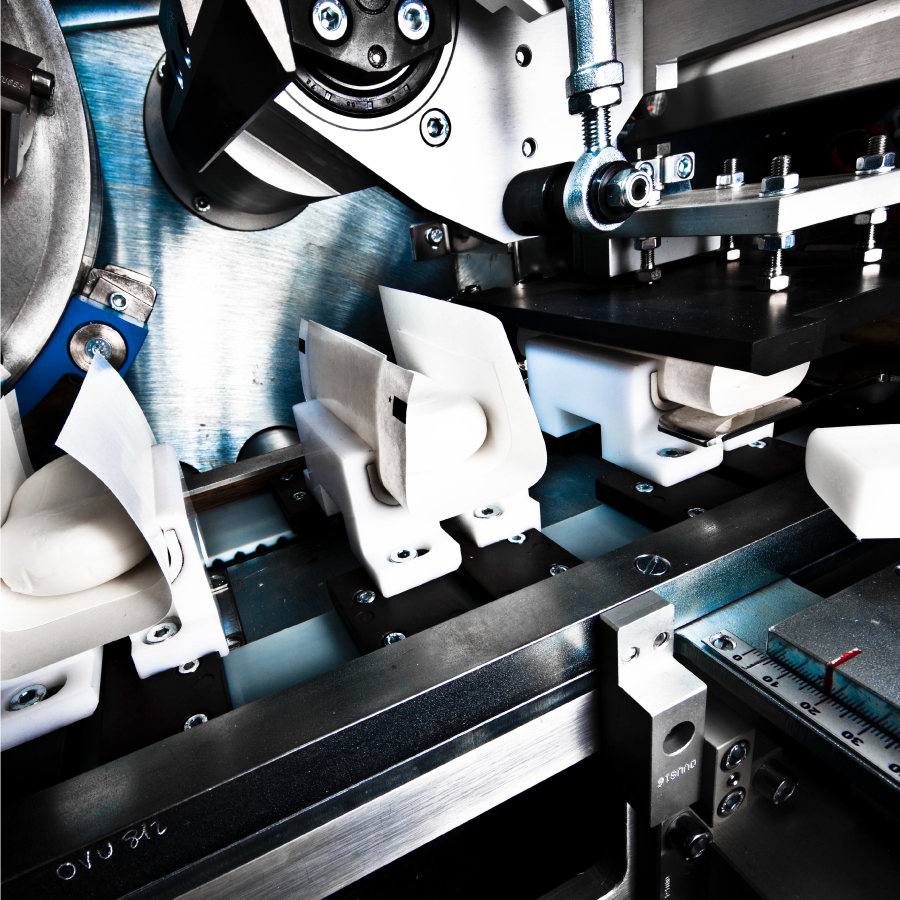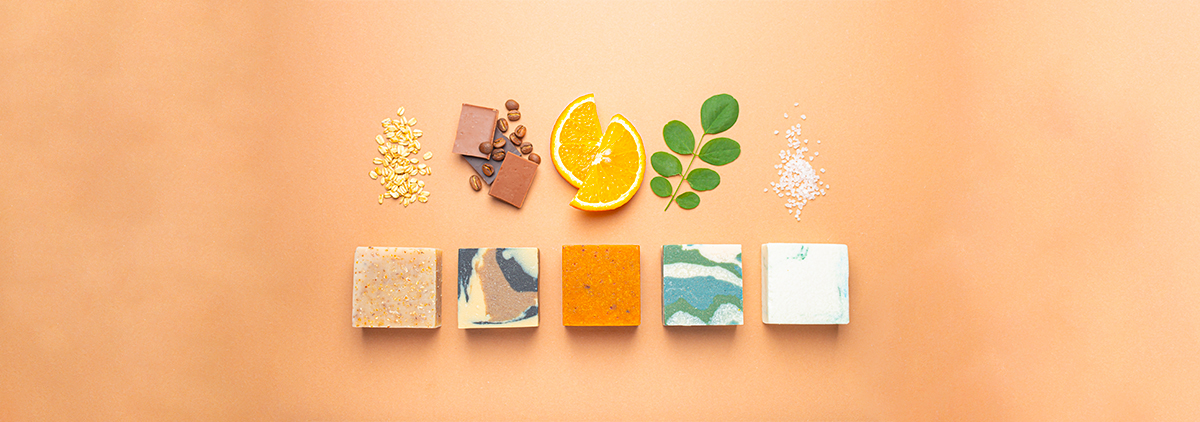Why solid beauty has a chance to go mainstream and what this means for packaging
With a revenue of $503 billion in 2021, up from $471 billion in 2020, the global beauty & personal care market is growing at a steady rate, as it's expected to hit $679 billion by 2026[1]. Solid beauty, a rising star in the industry, is thriving and with high-performance skincare coming for the nascent category, many industry observers are wondering whether this is the time it will go mainstream[2]. Largely driven by the broader sustainability trend, solid beauty is still small, comparatively speaking, but there are huge opportunities for growth.
Since the bar of soap has come to fruition, skincare has undergone a significant evolution. While the soap-making craft started in Europe in the 7th century, it wasn't until 1884 that solid soaps were sold in individually branded wrappers. Prior to the 1940s, they were much harsher than the ones in use today, often causing irritation[3]. But in the 1960s, their capability to advertise health, beauty and well-being had already achieved widespread recognition. Over the decades, the search for a more skin-friendly solution, combined with the rising hygiene and beauty awareness, has led to continuous improvements, transforming skincare into a multi-billion dollar global industry.
Within the context of this broader market, solid cosmetics has always played its part, but in recent times, with hygiene[4] and sustainability[5] becoming top priorities, more and more brands are rediscovering it. Last year alone, sustainable skincare was spreading like wildfire: from January to May, 2021, sales of solid beauty products in the US grew by a staggering 29%[6]. The solid cosmetics industry, previously confined to solid soaps, now features a much wider array of options, including solid shampoo, solid hair balm, solid shower gel, solid hand lotion, solid body cream, body oil and body butter.
Within bath and shower, bar soaps are by far the leaders in the category and are therefore expected to generate the highest growth percentage in the future. In this regard, the fastest-growing countries are India and Brazil, where, despite an already high market penetration, the solid soap segment posted an accelerated growth during the pandemic. To this day, toiletries such as bath and shower, hair care and oral care dominate packaging, carrying out the lion's share of volumes, with Asia-Pacific remaining the growth engine[7]. Interestingly, toiletries are also the most interesting segment from a packaging point of view.
Solid beauty: the sustainable alternative to liquid products
The main driver behind the growth of solid beauty is the rising demand for sustainable cosmetic and, broadly speaking, for products that have to be greener in all aspects, from the production until the final packaging. Unlike their liquid competitors, frequently associated with plastic pollution and palm oil-driven deforestation, solid beauty products are perceived as inherently greener by consumers. Solid soap and solid shampoo are thriving, as they offer consumers the opportunity to cut down on packaging waste and water consumption[8].
Indeed, one of the most profound differences between liquid and solid beauty lies in the amount of water needed to actually make the product. Solid beauty products are much more water-efficient than liquid ones and thus they are inherently eco-friendlier. Depending on the product category, an average beauty product contains anywhere from 60% to 90% water, while bar soaps contains only traces or none at all[9]. Because of this, many international brands are jumping on the waterless bandwagon with both feet, as decreasing water consumption is instrumental to these corporations' commitment to reduce their carbon footprint.
Solid is also synonymous with boosted performance[10]. Solid beauty products, in fact, are higher-quality, since mixing water with natural active ingredients, like vitamin C, damages the product overtime; in addition, a higher product performance also means that less of the product may be needed upon its use, avoiding product waste[11]. This is significant — so much so that solid cosmetics are already advertised as "water-free beauty"[12]. Industry experts are already claiming that "waterless beauty” might just be the future of cosmetics."[13]
Not only that: sustainable skin care and solid beauty solutions offer a few advantages to consumers, unmatched by their liquid counterparts. From a consumer perspective, solid beauty is more comfortable for traveling[14]. It can be carried on an airplane, since anti-terrorism regulation does not apply[15]. Also, like liquid products, solid solutions can be packed in the form of single-dose units, which, being more dense than liquid ones, are more space-saving and weigh less. Last but not least, solid beauty products come in receptacles that can’t be broken as easily as those of liquid ones, so there’s no risk of spilling the product.
But most importantly, solid beauty is more sustainable. The packaging of solid beauty products are frequently compostable and recyclable. From the brands' perspective, sustainable cosmetic packaging, being more space-efficient, is more affordable and easier to manage logistics-wise — as well as easier to ship, which translates into an even lower carbon footprint and operating costs. On top of this, sustainable cosmetic packaging is usually made of cardboard and is, therefore, plastic-free.
Started as a niche, solid beauty has truly grown into a massive population of consumers ready to shift to brands that show a greater responsibility and commitment. More and more shoppers tend to prioritize environment-friendly features, such recyclability and reusability.
The pandemic has been instrumental in the boom of the solid beauty market. Wellness, hygiene as well as holistic, clean and natural beauty: before COVID-19, these were the main focus, but nowadays, they are being redefined in terms of health and self-care[16]. Basic preventative measures are taken into higher account, marking a substantial shift in hygienic habits and lifestyle, now more centered around the home as the primary source of comfort and well-being.
Ingredient safety and transparency have become essential to consumers, increasingly information-hungry and knowledgeable about ingredients. For this very reason as well as for concerns around sustainability in the supply chain, transparency is now key in product labels. Unsurprisingly, the quest for a green, clean and natural solution is the number one trend expected to impact beauty and personal care in the next five years, as reported by Euromonitor's Voice of the Industry survey[17].
Packaging machine: what’s new in the production of solid beauty?
Given the growth rate of solid beauty, its impact on the packaging machine landscape is significant. In its portfolio, ACMA has two different technologies for soap bars that can also be adapted for new sustainable skincare products: soap cartoning & box filling, and soap wrapping. From a technical standpoint, soap cartoning and box filling consist in forming carton/cardboard boxes, placing the product inside the box and closing it with a hot-melt (i.e. glue) or tuck-in system.

Soap wrapping, on the other hand, wraps the product with double material, inner stiffener and outer wrap to have maximum package quality and product conservation. The closure of the wrapping is made with a hot-cold sealing system of longitudinal and side sealings. This technology enables the use of green and recyclable materials (paper-based or plastic materials that can be recycled, such as BOPP, PP and OPP) and thus it’s inherently environment-friendly.

Within ACMA's portfolio, the machine models suitable for solid beauty with soap cartoning & box filling technology are SC 350, SC 550, SC 600 and SC 700, varying in terms of speed and customization as regards the closure of the cardboard box. In all cases, the product can either be wrapped or “naked”, i.e. devoid of any covering other than the box itself. Therefore, depending on the production line, two different types of products can be handled, regardless of size and measure. As regards soap wrapping, the machine models available are SW 250, SW 350, SW 550, SW 600 and SW 700.
All these packaging machines are flexible, being able to manage different shapes of soap bars with various sizes and forms, with ergonomic design with cantilevered execution, gentle product handling and feature easy size change-over. The speed ranges from 250 to 700 ppm for soap cartoning and box filling machines and from 350 to 700 pieces per minute for the soap wrapping models.
Last but not least, all these models can be customized with the new web HMI OptiMate, the innovative software developed by Coesia Digital for improving the efficiency and productivity of the machines, being a single point of access to all machine’s information as troubleshooting assistance, machine’s real-time data and IoT as a service, with a user-friendly dashboard.
Unconventional ways to wrap solid products
Now more than ever, visual appeal and original design play a key role in consumer attention — a commodity that has grown more and more scarce in recent years. That's why packaging, the so-called silent salesman[18], is a natural-born ally for marketers looking for novel ways to stand out in the crowded shelves of supermarkets and online shops.
In this regard, the most interesting wrapping solutions by ACMA are CW 600, CW 800, HW 900 and JW 700. These machines allow for the typical wrapping styles of rounded and flat base products that are typical of the confectionery market, like double twist or bunch, but can be also used for beauty and personal care solid products, especially for scenarios such as hotels, B&B and the hospitality industry — giving a fresh, new, interesting spin to the concept.
Are you planning to enter the solid beauty market? Get in touch: we will be your competitive advantage.
[1] Source:Statista
[2] Source:Vogue Business
[3] Source:Skinsight
[4] Source:McKinsey
[5] Source:Deloitte
[6] Source:Vogue Business
[7] Source:Euromonitor
[8] Source: Water scarcity is a growing problem globally, as reported by the WWF
[9] Source:The International Natural and Organic Cosmetics Association
[10] Source:The International Natural and Organic Cosmetics Association
[11] Source:The International Natural and Organic Cosmetics Association
[12] Source:The International Natural and Organic Cosmetics Association
[13] Source:Glamour Magazine
[14] Source:Covalo Personal Care
[15] Source:European Union, Transportation Security Administration (US)
[16] Source:Euromonitor
[17] Source:Euromonitor's Voice of the Industry: Beauty and Personal Care
[18] Source:Packaging Europe



